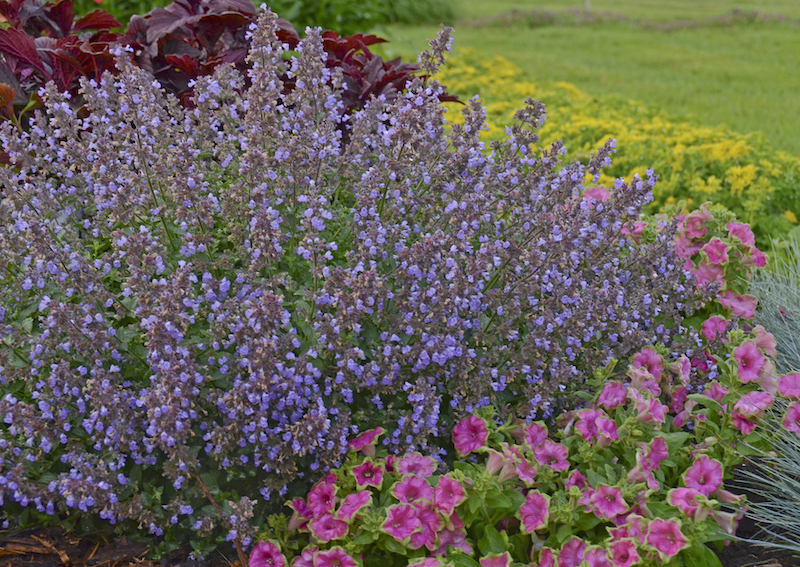Catmint is a low-maintenance perennial that is not afraid of periods of drought or heat, but if it is not watered properly from the beginning, it will be less adaptable to harsh conditions. The root system of Catmint should be trained to grow deep and wide with proper watering techniques. Watering less frequently for longer periods is always more beneficial for a plant than watering a small amount more often.

How To Tell If Catmint Needs Watered
Catmint will become very droopy when it needs to be watered. The goal of consistent watering is to make sure that drooping doesn’t happen. When a plant is stressed too often by lack of water or improper light exposure it will weaken and become more susceptible to pests and diseases. Other signs that Catmint has been underwatered are leaves turning brown and possibly crispy, smaller flower spikes over time, or death of a large portion of the plant. Overwatering is also a possibility with Catmint. However, if the soil is well draining, then that is not often an issue.
How Often To Water Catmint
Catmint will need watering more often when it is first planted until the roots become established. An average amount of 1 to 1 ½ inches of water should be applied over 2-3 watering sessions a week. As the new plant begins to show new growth, the watering can be reduced to 2 times a week. Eventually, watering should be reduced to once a week as the plant settles in.
Once well established, Catmint will usually need supplemental watering every week to 10 days. One long session is more beneficial to encourage the roots to grow deep and wide instead of more frequent, shorter sessions. Catmint will tolerate small periods of drought, but may require extra watering during high-heat events. Make sure to plant Catmint with other plants that share its drought-tolerant nature. Shrubs and perennials that prefer more moisture and less light exposure are not good companions. Choose companion plants like Roses, Daylilies and ornamental Grasses.
Container-grown Catmint will need more attention paid to watering. Generally any plant grown in a pot will need to be watered a few times a week, up to every day during the height of the summer. Watering a pot until the water runs out of the bottom is the best way to ensure that the soil is saturated. If the container receives natural irrigation from rain, less supplemental water is needed. As long as the drainage in the pot is excellent, overwatering potted Catmint is not a concern.

Best Time To Water Catmint
The best time of day to water most plants is early in the morning while the soil is still cool or even a bit damp from dew. The soil will accept all of the water applied unlike at the height of the day when a percentage of the water will be lost to evaporation. Using drip irrigation or soaker hoses for primary watering ensures that all of the water reaches the soil and the roots with little wetting of the foliage. Most mildews and fungal diseases are spread by wet foliage. Using soaker hoses and drip irrigation also helps to wet the soil deeper. Extra watering during the winter is not usually necessary. Depending on your hardiness zone, Catmint will either go fully dormant or stay semi-evergreen during the winter.
How to Water Catmint
Step 1 - Stick your finger in the soil to feel for moisture
If the soil is still damp and the plant doesn’t look thirsty, do not water until the soil is drier.
Step 2 - Water when soil feels dry 2 - 3 inches below the surface
This is the time to water. Spacing out watering sessions will help to encourage deeper root growth.
Step 3 - Wet the soil thoroughly
Water the soil around the plant and the root zone until there is a bit of standing water. This indicates that the soil is saturated. Any standing water should soak in quickly to indicate that drainage is good.
Step 4 - Water less often, but for longer periods
Watering plants deeper, for a longer period will result in better root formation than short, frequent watering sessions.
Catmint Watering Tips
- Consistent watering when plants are first planted will encourage good root growth
- Long watering sessions less often are most beneficial for Catmint
- Under- or over-watered plants can get stressed and become susceptible to pests and disease
- Using drip irrigation or soaker hoses will reduce the amount of water lost to evaporation
 |
Author Robbin Small - Published 7-14-2022 |
